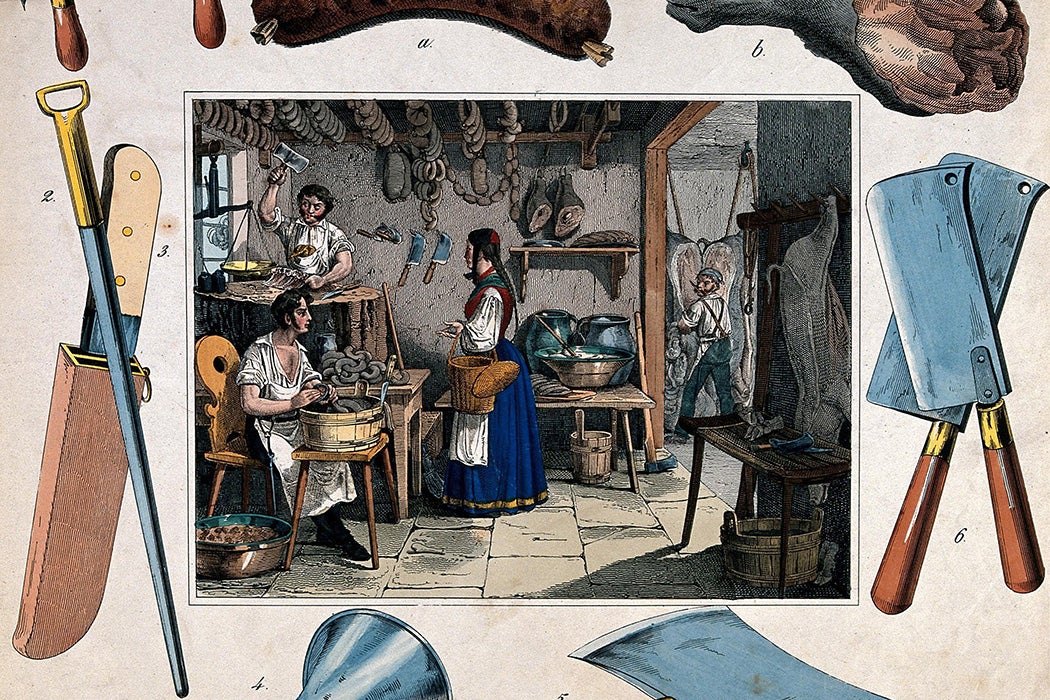In conversations about the relationship between governments and industry, regulation often appears as a relatively recent imposition on a laissez-faire baseline. However, in examining three major global cities, historians Roger Horowitz, Jeffery Pitcher, and Sydney Watts demonstrate that, when it comes to the meat industry, free markets were a relatively brief interruption in a longstanding history of government control.
In the late eighteenth and early nineteenth centuries, the authors write, Paris, Mexico City, and New York all had similar regimes for overseeing meat production: government-endorsed guilds or cartels combined with designated places where livestock could be sold or butchered. Details differed—for example, New York’s municipal government handled regulations in Manhattan, while the French and Spanish crowns were responsible for Paris and Mexico City, respectively. But all three systems kept rogue operators away and set quality standards.
In each city, sudden political changes brought new experiments in free market economics. The French Revolution destroyed Paris’s feudal order, including the butchers’ guild. Former journeymen left their masters and established new businesses, while competitors from the countryside streamed into the city. The Mexican War of Independence also produced ideologically driven free-market policies. Over five years in the 1810s, the number of meat merchants in Mexico City jumped from thirteen to more than 100. New York adopted its own free market system in the populist Jacksonian era, in a more bottom-up fashion. Outlaw butchers set up shop around the city, and juries often refused to convict them, reflecting rising support for free commerce and opposition to the de facto guild of government-licensed butchers. In 1943, the New York City Council gave in to popular pressure and legalized meat sales in private stores, leading to a rapid expansion in butcheries run by immigrants who came from outside the traditional apprenticeship system.
Horowitz, Pilcher, and Watts explain that, in all three cities, the problems with free markets quickly became obvious. A rising number of suppliers didn’t drive down prices, and in fact encouraged hoarding and speculation. And quality sharply declined. In France, the government swiftly adopted new regulations, limiting where animals could be slaughtered and meat sold under Napoleon’s reign, later instituting a strict inspection system designed to ensure food safety. In Mexico, by contrast, a cartel of meat-sellers quickly took control over the market, gaining enough political power to beat back most government regulation for a century while also stifling competition.
Weekly Newsletter
New York fell somewhere between Paris and Mexico City in the strength and swiftness of government response—a process complicated by the rising influx of meat in refrigerated rail cars from the West. Meat quality was one of the first issues to be taken up by Progressive-era reformers, who helped create a strong system of federal government oversight.
“Placed in the context of government policy since American independence,” write the authors, “the nineteenth-century liberal experiment in the meat trade appears as merely an interruption in the dominant market culture of regulation governing the industry, rather than a marker of America’s exceptional reluctance to regulate producers.”
Support JSTOR Daily! Join our new membership program on Patreon today.







